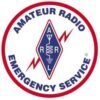ARE YOU READY?
Training: KNW-102
Originally written by Greg Sarratt, W4OZK,
ARRL Alabama Section Manager
updated: 01 Aug 2025 by Paul Smith (K5PRS)
Anyone who has lived in District 14, Harris County for an appreciable length of time knows about disasters and is, hopefully, prepared for them. Some of our most recent events were:
- Houston Derecho & Hurricane Beryl (May 2024) – A devastating derecho brought winds up to 100 mph, causing at least 8 fatalities and ~$1.2 billion in damage in Harris County.
- Winter Storm Uri (February 2021) – Severe cold caused statewide power outages and water supply failures; highlighted infrastructure weaknesses in Harris County
- Hurricane Harvey (August 2017) – Stalled over Harris County for several days, dumping over 40–50 inches of rain in many areas; some parts recorded over 60 inches. This storm damaged more than 120,000 homes, triggered 448,000 FEMA individual assistance applications, and caused an estimated $100–125 billion in damages.
As bad as they were, those disasters become trivial when you consider the ramifications of a national grid down situation and how ARES would be critically necessary…but only if we are properly prepared.
Tonight’s training, entitled, Are You Ready? reminds us that Amateur Radio operators who assist in local, regional or national or international disasters are required to have increasing levels of training and experience. Necessary Federal requirements are designed to keep the best workforce in the disaster area. We need to train to be part of that “best workforce”.
Efficient Amateur Radio operators must consider safety, and must prepare, train, practice and test themselves before the event. So, Are You Ready? Please refer to your personal taskbook, located on the STXARES.ORG web site. Please actively work on it and keep it current. Please participate in nets, Special Event opportunities, SETs, Field Day events, etc. Please install and learn to use Winlink Express…familiarize yourself with the forms.
Prepare your personal Jump Kit, equipment, manuals, provisions, money, plan, and join and build your local ARES or emergency communications group. Review Go Bag trainings KNW-112 & 113 and KNW-134 FAMILY FIRST.
Build your experience and practice at Field Days, Simulated Emergency Tests, contests, nets and public service events. Participate in planning, in drills and in passing NTS traffic.
Test by connecting your equipment in different configurations. Learn to operate it fully, efficiently and to interoperate with other amateurs. Digital messaging, the sending of National Traffic System messages via Winlink Express and other apps, has become a critical part of ARES for disaster recovery. Operators should get a TNC like the Kantronics PC3+ and a sound card like the SignaLink USB for radio messaging as soon as they can since we won’t be able to count on the Internet during a crisis and at least two members of an away team have to be equipped to send digital messages. Until then, everybody should create and send Telnet messages via the Internet during our scheduled nets. Let me say that again. Everybody on tonight’s net should have sent in a Telnet check in message at minimum. Did you send a digital message via the NTS system this month? Did you?
Train by taking all the ARRL, American Red Cross, Salvation Army, Federal Emergency Management Agency (FEMA) and other available trainings you can get. Here are some ARES minimum training requirements:
- FEMA – ICS-100, ICS-200, IS-700 and IS-800
- ARRL – EC-001 and EC-002; First aid and CPR
- Salvation Army – National Disaster Training
- American Red Cross – Introduction to Disaster
- National Weather Service – Skywarn training
- National Traffic System
- Community Emergency Response Team Training (CERT)
Safety/Health:
- Immunizations – Tetanus; Hep-A; Hep-B; TB; Dengue Fever; Malaria; etc. Check with your doctor on these and other vaccinations necessary for you and get them before disaster strikes.
- Diet – If you have special dietary needs, be sure to have plenty food to meet your needs for the expected deployment.
- Water – Obtaining potable water may be an issue. Carry as much drinking water as you can given the circumstances. Carry a water purification device such as a Sawyer Mini, a pot in which you can boil water and purification tablets. See KNW-150.
- Medications – Carry the prescription and OTC medications you will need for the expected deployment.
- First Aid – There are many levels of first aid kits from a basic band aids and topical antibiotic cream to broken bones and tourniquets and compression bandages. Adding meds and equipment to your CERT backpack and keeping it available is a good way to ensure you’re prepared for medical emergencies.
Ongoing Experience:
- Nets
- Exercises
- Public service events.
- SETs
- Field Day Exercises
- Volunteer to do nets, to present training or to take on a position within D14 ARES leadership.
The more we can do to prepare beforehand, the safer, more useful, more resourceful and more beneficial we will be during the event–even if it has caught us by surprise! If you do nothing you cannot expect to be ready if bad things happen. Please don’t let this training go in one ear and out the other. Prepare as if your life and the lives of your families depend on it because it will someday.
That concludes tonight’s training. Are there any questions, comments or suggested additions to this material?
Thanks, this is (callsign) clear to net control.
Send corrections, modifications, updates or suggestions to k5prs@aol.com
